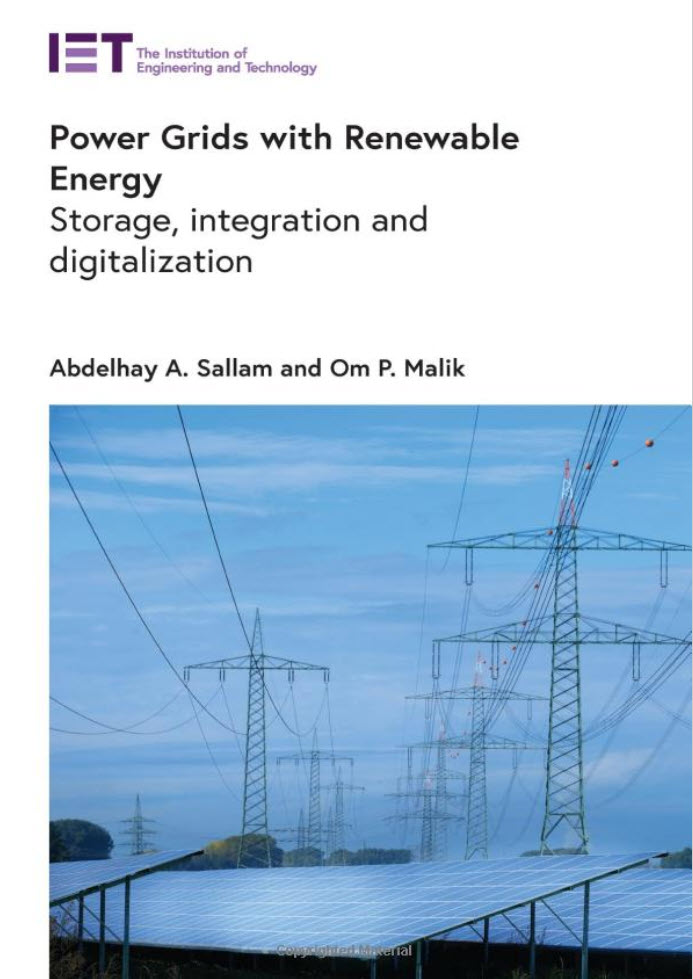Storage, integration, and digitalization
Book review by Alexander Apostolov, USA

As we have already discussed many times in the magazine, the electric power industry is going through a period of significant changes driven by global warming and the push to transition from fossil fuels-based generation to renewable energy resources that do not have an impact on the climate and hopefully will help us overcome this threat. However, everything has a price and in the case of renewables it is their dependency on factors that we cannot control, as well as the fact that they interface with the electric power system in many cases through inverters.
In order for protection automation and control specialists to be able to design systems that can deal with the impact of the penetration of renewables, we need first to start with a good understanding of what the different renewable resources are and what are their characteristics. This book can help us achieve this goal, because it covers in detail many of the issues of concern.
The two authors of the book are both experienced academics with significant research background as well.
Abdelhay A. Sallam is Professor Emeritus in Port Said University, Egypt. He has published over 100 papers in international journals and conferences and 2 books and has had 17 years of experience in industry.
Om P. Malik is Professor Emeritus in the University of Calgary, Canada. He is the author of two books and his publication record includes over 375 papers in international journals such as IEEE Transactions and IET Proceedings. He has presented over 360 papers in international conferences.
The close to 600 pages of the book are organized in twenty-one chapters and two appendices. It starts with an introductory chapter that is summarizing the new trends in electric power grids. The remaining 20 chapters are split into four parts.
Part one is dedicated to renewable energy sources and includes 5 chapters covering wind and solar energy, ocean tidal wave and thermal energy, and finally biomass energy.
The second part of the book includes six chapters that focus on energy storage systems starting with electrical energy storage in Chapter 7. This is followed by a chapter on mechanical energy storage systems. Chapter 9 describes chemical energy storage systems, such as fuel cells and power-to-gas. Electromechanical energy storage systems are presented in Chapter 10, while the next chapter covers electrostatic, magnetic and thermal energy storage. The last chapter of this part is on the application of such storage systems in electric vehicles.
Part 3 covers the important topics related to renewable energy sources integration. It starts with chapter 13 dedicated to power conditioning systems, followed by a chapter on the integration of distributed energy resources. Chapter 15 addresses issues related to the economic dispatch of hybrid thermal and wind power plants. The next two chapters discuss generation scheduling and load flow analysis for electric power systems with renewable energy resources. This is followed by a chapter on the integration of electric vehicles with renewables into power grids. The last chapter of this part is about modeling and control of microgrids.
Part four of the book includes two chapters covering systems associated with the integration of renewables in the power system and more specifically on communications and cyber security.
Appendix A covers probability density and Weibull distribution functions, while appendix B describes testing based on a modified standard IEEE model.
Considering the commitment of many countries to a transition from fossil fuels to renewables as the energy sources in their electric power systems, it is important for the members of the PAC community to become familiar with the different types of generation, so we can build more efficient protection, automation and control systems in the future.
Power Grids with Renewable Energy: Storage, integration and digitalization
by Abdelhay A. Sallam and Om P. Malik
Publisher: The Institution of Engineering and Technology
ISBN-13: 9781839530272








